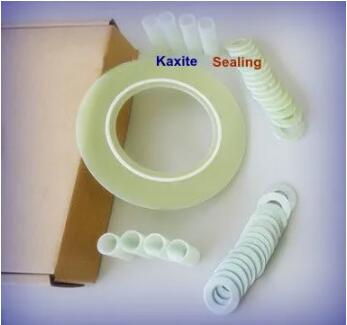Understanding Flange Insulation Gasket Sets: What They Are and Why They Matter
2024-08-28
Introduction
Flange insulation gasket sets are crucial components in various industrial applications, especially in sectors where the prevention of electrochemical corrosion is critical. These sets are commonly used in oil and gas, chemical processing, and water treatment industries. In this blog, we'll explore what flange insulation gasket sets are, their importance, and the types available.
What Are Flange Insulation Gasket Sets?
Flange insulation gasket sets are designed to maintain the integrity of flanged connections by preventing electrical conductivity between the flanges. They consist of gaskets, sleeves, and washers made from non-conductive materials. The primary purpose is to electrically isolate the flange, thus preventing galvanic corrosion, which can occur when different metals come into contact in the presence of an electrolyte.
Why Are Flange Insulation Gasket Sets Important?
In industrial piping systems, different types of metals are often used, which can lead to galvanic corrosion. This type of corrosion occurs when two dissimilar metals are in electrical contact with each other in the presence of a conductive fluid. Over time, this can cause significant damage to pipelines, leading to leaks, reduced efficiency, and costly repairs. Flange insulation gasket sets prevent this by breaking the electrical path, thus protecting the system from corrosion.
Additionally, these gasket sets can also help in controlling stray currents that may result from grounding issues in electrical systems. This is particularly important in industries where safety and system reliability are paramount.
Types of Flange Insulation Gasket Sets
There are several types of flange insulation gasket sets, each designed for specific applications:
1. Type E (Full-Face Gasket Set): This type of gasket covers the entire face of the flange, providing maximum protection. It is often used in applications where complete electrical isolation is required.
2. Type F (Ring-Type Gasket Set): This gasket is smaller and only covers the raised face of the flange. It is typically used in systems where space is limited, and complete isolation is not as critical.
3. Type D (O-Ring Gasket Set): This gasket fits into the groove of a ring-type joint flange. It is used in high-pressure applications where a tight seal is necessary.
4. High-Temperature Gasket Sets: These are made from materials like phenolic or glass-reinforced epoxy, designed to withstand extreme temperatures while maintaining their insulating properties.
Materials Used in Flange Insulation Gasket Sets
The materials used in flange insulation gasket sets are chosen for their non-conductive properties. Common materials include:
- Phenolic Resin: A durable and heat-resistant material commonly used in insulation gaskets.
- Glass-Reinforced Epoxy: Known for its strength and temperature resistance, making it ideal for high-pressure applications.
- PTFE (Polytetrafluoroethylene): Offers excellent chemical resistance and is used in environments where aggressive chemicals are present.
Conclusion
Flange insulation gasket sets play a vital role in protecting industrial piping systems from galvanic corrosion and electrical issues. Understanding the different types and materials used in these gasket sets can help you select the right one for your application, ensuring long-term reliability and safety.



